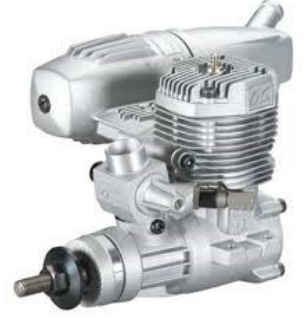The reason we need to break in a glow plug engine is to 'mate' the moving parts together and eliminate any roughness between surfaces. Before we go any further, let me just say that you should follow your engine manufacturer's instructions for proper break-in procedure.

The break-in procedure creates smoother surfaces for less friction, better performance and a longer engine life. For example, a piston ring is seated in the first few seconds an engine runs regardless if it is the smallest to the largest of ringed engines.
When breaking in your engine you have two choices; you can either break it in on the ground (using a bench setup) or installed in your aircraft. (When breaking in the engine in an aircraft, fuel exhaust through the engine goes into the air instead of oiling the grass or the location where your bench stand may be.) Once you decide this, the break-in process can now begin.
Start the engine and at full throttle, use the high speed needle valve (HSNV) to adjust the air/fuel mixture with as much fuel as possible to achieve the highest RPM then open the HSNV approximately ½ a turn. (This is referred to as running ‘rich’ and the extra fuel will allow for plenty of lubrication and cooling.) After approximately 5 seconds at full throttle, reduce throttle to idle for 20 to 30 seconds or so. Repeat this sequence for a 3 - 5 minutes. The full throttle allows the increased pressure in the cylinder to seat the ring while at idle more oil is spread on the moving parts. At this point if the engine is installed in an aircraft, flying can commence to carry on with the 2nd step of the break-in process. Gradually, over the next hour or two, adjust the HSNV to bring the engine closer to peak RPMs. As the engine breaks in you will notice the RPMs increase, the engine is smoother at higher throttle settings, has a smoother idle and quicker transitions from low to high RPMs. This is because the internal parts are getting bedded in and the engine break in procedure is completed. Now that the engine is broken in, and you have tweaked the HSNV for maximum RPMs, open the HSNV a few clicks to ensure the engine never has a lean run at the higher RPMs. Once your HSNV is set, only minor tweaking should ever be required. An adjustment should be made to maintain a rich run to compensate for airplane attitude (steep climbs and tight turn), fuel tanks below half full and weather conditions (colder air) which can all contribute to lean runs.
As a side note, breaking in the engine in an aircraft is my preferred method. The engine gets plenty of cooling when flying and has less static pulling force in the forward direction. This is because the plane is moving (flying) thus you off load the engine bearings!
Your engine is all ready for extended high power performance! Happy flying. RN

